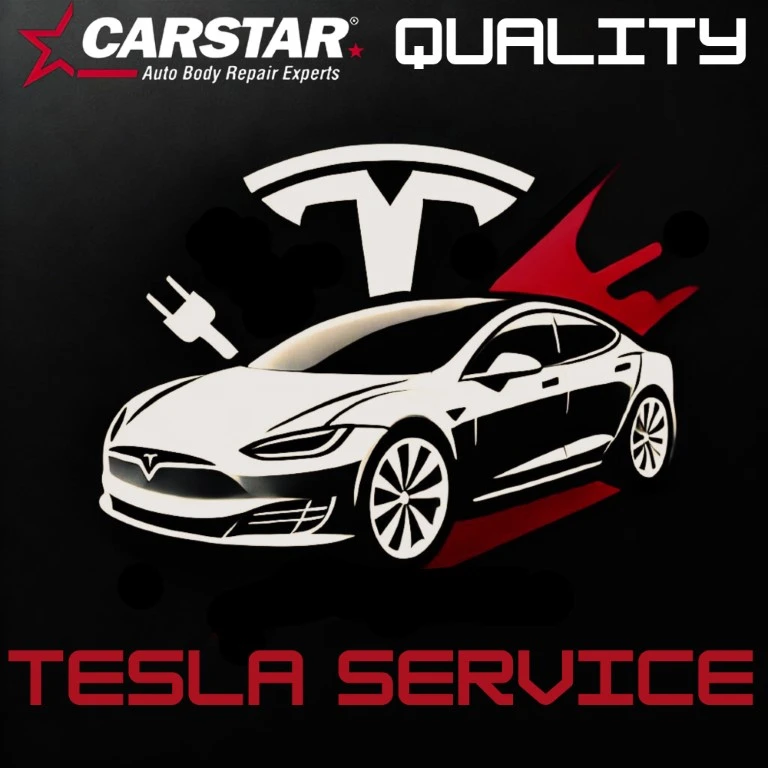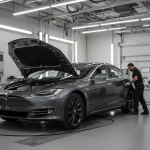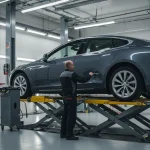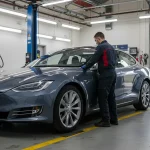If you’re a proud Tesla owner, you know the vehicle offers a futuristic driving experience with cutting-edge technology. But one crucial aspect of Tesla ownership is the battery — it powers everything. Knowing when to consider replacing your Tesla’s battery is essential for maintaining performance and avoiding expensive repairs down the line. At Quality Tesla Service, we understand how important your Tesla is to you, and we’re here to guide you through the process of understanding the lifespan of your battery and when it’s time for a replacement.
In this guide, we’ll take a deep dive into your Tesla battery lifespan, factors that affect its longevity, and the warning signs that indicate it’s time for a replacement. Whether you’re experiencing issues or just want to be proactive, this article is packed with valuable insights from the experts at Quality Tesla Service.
The Science Behind Tesla Battery Lifespan: What You Need to Know
Your Tesla’s battery is at the heart of its performance, and understanding how it works can give you insights into how long it lasts. Tesla uses lithium-ion batteries, which have a limited number of charge cycles before they start to degrade. Typically, the lifespan of a Tesla battery is between 8 to 10 years or 300,000 to 500,000 miles, but this can vary depending on several factors.
At Quality Tesla Service, we ensure that every aspect of your Tesla’s battery is optimized to provide you with a longer-lasting, high-performance experience. But what determines how long your battery lasts?
Factors That Affect Your Tesla Battery Lifespan
- Driving Habits
Aggressive acceleration, high speeds, and excessive use of the battery can decrease its lifespan. The way you drive directly impacts the number of charge cycles your battery goes through. - Climate and Temperature
Extreme temperatures, both hot and cold, can significantly affect the health of your Tesla’s battery. Tesla’s thermal management system helps mitigate these effects, but prolonged exposure to extreme conditions can still take its toll. - Charging Practices
Charging your Tesla at high rates or letting the battery drop too low can shorten its lifespan. Tesla recommends maintaining a charge level between 20% and 80% for regular use. - Battery Management System (BMS)
Tesla’s BMS is designed to protect the battery from overcharging, deep discharge, and other factors that could shorten its lifespan. This system plays a significant role in maintaining the health of your battery over time.
Signs It’s Time to Replace Your Tesla Battery
As your battery ages, you may notice signs that it’s time for a replacement. Some of these signs may be subtle, but if you’re aware of them, you can act early and avoid further damage to your vehicle.
1. Significant Decrease in Range
One of the first signs of a degrading battery is a noticeable drop in the range your Tesla can travel on a full charge. While it’s normal for some minor reduction in range to occur over time, a drastic decrease means the battery is nearing the end of its useful life.
2. Longer Charging Times
If your Tesla takes much longer to charge than it used to, the battery’s capacity is likely declining. This could be due to issues within the battery or the charging system, but it’s often a sign of battery degradation.
3. Frequent Warning Alerts
Your Tesla’s onboard system will alert you if the battery isn’t performing at optimal levels. If you notice frequent warnings about battery health or performance issues, it might be time to consider a replacement.
4. Battery Overheating
Overheating can indicate that the battery is no longer functioning efficiently. If you notice that your Tesla’s battery is getting too hot during charging or driving, contact Quality Tesla Service for an inspection.
How to Extend the Life of Your Tesla Battery
While the lifespan of your battery is partly determined by factors outside your control, there are steps you can take to help extend its life. By following best practices for charging, driving, and maintenance, you can get the most out of your Tesla’s battery.
1. Regular Maintenance
Keep up with regular maintenance and inspections at Quality Tesla Service. Our certified technicians will check your battery and its components to ensure everything is working as it should.
2. Avoid High Charge Levels and Deep Discharge
Try to keep your battery’s charge level between 20% and 80%. Charging beyond 90% regularly or letting the battery dip below 10% can cause unnecessary strain on the battery over time.
3. Park in Temperature-Controlled Environments
If possible, park your Tesla in a temperature-controlled environment to reduce the impact of extreme temperatures. This will help your battery last longer and perform better.
What Happens During a Tesla Battery Replacement?
If you’ve reached the point where replacing your Tesla battery is necessary, you might be wondering what the process entails. Here’s what you can expect when you bring your Tesla to Quality Tesla Service for a battery replacement.
- Inspection
Our technicians will perform a thorough inspection to confirm that the battery is indeed the issue. We’ll also check for any other potential problems that might need attention. - Battery Removal and Replacement
Once the issue is confirmed, we’ll carefully remove the old battery and install a new one. Our team follows Tesla’s specifications to ensure the replacement is done correctly. - System Calibration
After installing the new battery, we calibrate the system to ensure that everything is functioning smoothly. This includes adjusting the Battery Management System to optimize the new battery’s performance. - Post-Replacement Testing
After the replacement, we conduct a series of tests to ensure everything is working as it should. This includes checking charging times, range, and system diagnostics.
Ready to Take the Next Step with Quality Tesla Service?
Understanding the lifespan of your Tesla battery and knowing when it’s time for a replacement is essential for maintaining your vehicle’s performance. If you’re experiencing issues with your Tesla’s battery, don’t wait until it’s too late — contact Quality Tesla Service today!
Our expert technicians are ready to provide you with a comprehensive battery inspection, repair, or replacement. We’re here to ensure your Tesla continues to run smoothly for years to come.
Call us at (215) 355-5019 or email info@qualitycarstar.com to schedule your appointment. Don’t wait — let Quality Tesla Service take care of your Tesla’s battery needs today!
Have More Questions? We’ve Got Answers
We understand that a Tesla battery replacement can feel overwhelming, but Quality Tesla Service is here to guide you every step of the way. Below, we’ve answered some of the most common questions our customers ask about Tesla battery lifespan and replacements.
How long do Tesla batteries last?
Tesla batteries typically last between 8 to 10 years, or 300,000 to 500,000 miles, depending on factors like driving habits, climate, and maintenance.
How much does it cost to replace a Tesla battery?
The cost of replacing a Tesla battery can vary depending on the model and the condition of the vehicle. At Quality Tesla Service, we offer transparent pricing and can provide a detailed estimate.
Can I replace my Tesla battery myself?
We recommend having your Tesla battery replaced by certified professionals. Quality Tesla Service has the expertise and tools to handle battery replacements safely and efficiently.
How can I check the health of my Tesla battery?
Tesla provides a battery health check via its onboard diagnostics system. Additionally, Quality Tesla Service can perform a thorough inspection and give you a detailed battery report.







